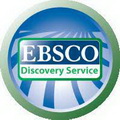PRIMENA KOMUNIKATORA U PODUČAVANJU DECE SA AUTIZMOM FUNKCIONALNOJ KOMUNIKACIJI
Pregledni naučni rad
Apstrakt
Za osobu se kaže da poseduje veštine funkcionalne komunikacije ukoliko ume da saopšti svoje trenutne želje i potrebe, a u skladu sa kontekstom u kome se nalazi. Međutim, ukoliko nema razvijenu tu sposobnost, može se podučiti da svoje želje saopštava putem komunikatora. Cilj ovog rada je da se pregledom literature utvrdi efikasnost primene komunikatora kod dece sa razvojnim teškoćama, kao i da se uporedi efikasnost podučavanja funkcionalnoj komunikaciji kroz upotrebu komunikatora i kroz upotrebu slika. Pregledom istraživanja koja su se odnosila na efikasnost primene komunikatora utvrđeno je da su različiti autori koristili najraznovrsnije aplikacije. Takođe, uočeno je da u svim istraživanjima u kojima je postojala jasno definisana procedura podučavanja ispitanika na korišćenje komunikatora je došlo do povećanja upotrebe funkcionalne komunikacije u svrhe zahtevanja željenih predmeta ili objekata kod ispitanika, ali i drugih vidova komunikacionih razmena, što je posledično dovodilo do redukcije ispoljavanih problema u ponašanju. Osim toga, pokazalo se da nakon što se deca nauče upotrebi komunikatora, spontano dolazi do generalizacije primene komunikatora sa različitim osobama, u različitim okruženjima, ali i korišćenju različitih slika odnosno simbola, kojima deca prethodno nisu naučena. Kada je u pitanju pregled literature koji se odnosi na poređenje efikasnosti u podučavanju funkcionalnoj komunikaciji upotrebom razmene fotografija nasuprot upotrebi komunikatora, nisu utvrđene razlike u uspešnosti jedne ili druge metode komunikacije. Kao preporuku ističemo implementaciju istraživanja u našoj sredini, a koja se odnose na poređenje efikasnosti komunikacije putem razmene fotografija i komunikatora, kao i ispitivanje efikasnosti upotrebe komunikatora kod dece sa različitim sindromskim stanjima ili različitim tipovima razvojnih poremećaja.
Reference
Anagnostou, E., Jones, N., Huerta, M., Halladay, A. K., Wang, P., Scahill, L., Horrigan, J. P., Kasari, C., Lord, C., Choi, D., Sullivan, K., & Dawson, G. (2015). Measuring social communication behaviors as a treatment endpoint in individuals with autism spectrum disorder. Autism, 19(5), 622-636. https://doi.org/10.1177/1362361314542955
Bailey, J., McComas, J., Benavidas, C., & Lovascz, C. (2002). Functional assessment in a residential setting: identifying an effective communicative replacement response for aggressive behavior. Journal of Developmental and Physical Disabilities, 14(1), 353–369. https://doi.org/10.1023/A:1020382819146
Boesch, M. C., Wendt, O., Subramanian, A., & Hsu, N. (2013). Comparative efficacy of the Picture Exchange Communication System (PECS) versus a speech-generating device: Effects on social-communicative skills and speech development. Augmentative and Alternative Communication, 29(3), 197-209. https://doi.org/10.3109/07434618.2013.818059
Boesch, M. C., Wendt, O., Subramanian, A., & Hsu, N. (2013). Comparative efficacy of the Picture Exchange Communication System (PECS) versus a speech-generating device: Effects on requesting skills. Research in Autism Spectrum Disorders, 7(3), 480-493. https://doi.org/10.1016/j.rasd.2012.12.002
Boyd, T. K., Hart Barnett, J. E., & More, C. M. (2015). Evaluating iPad technology for enhancing communication skills of children with autism spectrum disorders. Intervention in School and Clinic, 51(1), 19-27. https://doi.org/10.1177/1053451215577476
Buckley, S. D., & Newchok, D. K. (2005). Differential impact of response effort within a response chain on use of mands in a student with autism. Research in Developmental Disabilities, 26(1), 77-85. https://doi.org/10.1016/j.ridd.2004.07.004
Carr, E. G., & Durand, V. M. (1985). Reducing behavior problems through functional communication training. Journal of Applied Behavior Analysis, 18(2), 111-126. https://doi.org/10.1901/jaba.1985.18-111
Chavers, T. N., Morris, M., Schlosser, R. W., & Koul, R. (2021). Effects of a systematic augmentative and alternative communication intervention using a speech-generating device on multistep requesting and generic small talk for children with severe autism spectrum disorder. American Journal of Speech-Language Pathology, 30(6), 2476-2491. https://doi.org/10.1044/2021_AJSLP-20-00353
Dimian, A. F., Elmquist, M., Reichle, J., & Simacek, J. (2018). Teaching communicative responses with a speech-generating device via telehealth coaching. Advances in Neurodevelopmental Disorders, 2(1), 86-99. https://doi.org/10.1007/s41252-018-0055-7
Drager, K., Light, J., & McNaughton, D. (2010). Effects of AAC interventions on communication and language for young children with complex communication needs. Journal of Pediatric Rehabilitation Medicine, 3(4), 303-310. https://doi.org/10.3233/PRM-2010-0141
Durand, V. M. (1999). Functional communication training using assistive devices: Recruiting natural communities of reinforcement. Journal of Applied Behavior Analysis, 32(3), 247-267. https://doi.org/10.1901/jaba.1999.32-247
Fletcher-Watson, S., Petrou, A., Scott-Barrett, J., Dicks, P., Graham, C., O’Hare, A., Pain, H., & McConachie, H. (2016). A trial of an iPad™ intervention targeting social communication skills in children with autism. Autism, 20(7), 771-782. https://doi.org/10.1177/1362361315605624
Franco, J. H., Lang, R. L., O'Reilly, M. F., Chan, J. M., Sigafoos, J., & Rispoli, M. (2009). Functional analysis and treatment of inappropriate vocalizations using a speech-generating device for a child with autism. Focus on Autism and Other Developmental Disabilities, 24(3), 146-155. https://doi.org/10.1177/1088357609338380
Fuller, E. A., & Kaiser, A. P. (2020). The effects of early intervention on social communication outcomes for children with autism spectrum disorder: A meta-analysis. Journal of Autism and Developmental Disorders, 50(5), 1683-1700. https://doi.org/10.1007/s10803-019-03927-z
Ganz, J. B. (2015). AAC interventions for individuals with autism spectrum disorders: State of the science and future research directions. Augmentative and Alternative Communication, 31(3), 203-214. https://doi.org/10.3109/07434618.2015.1047532
Ganz, J. B., Mason, R. A., Goodwyn, F. D., Boles, M. B., Heath, A. K., & Davis, J. L. (2014). Interaction of participant characteristics and type of AAC with individuals with ASD: A meta-analysis. American Journal on Intellectual and Developmental Disabilities, 119(6), 516-535. https://doi.org/10.1352/1944-7558-119.6.516
Genc-Tosun, D., & Kurt, O. (2017). Teaching multi-step requesting to children with autism spectrum disorder using systematic instruction and a speech-generating device. Augmentative and Alternative Communication, 33(4), 213-223. https://doi.org/10.1080/07434618.2017.1378717
Gevarter, C., & Zamora, C. (2018). Naturalistic speech-generating device interventions for children with complex communication needs: A systematic review of single-subject studies. American Journal of Speech-Language Pathology, 27(3), 1073-1090. https://doi.org/10.1044/2018_AJSLP-17-0128
Gilroy, S. P., Leader, G., & McCleery, J. P. (2018). A pilot community‐based randomized comparison of speech generating devices and the picture exchange communication system for children diagnosed with autism spectrum disorder. Autism Research, 11(12), 1701-1711. https://doi.org/10.1002/aur.2025
Heath, A. K., Ganz, J. B., Parker, R., Burke, M., & Ninci, J. (2015). A meta-analytic review of functional communication training across mode of communication, age, and disability. Review Journal of Autism and Developmental Disorders, 2(2), 155-166. https://doi.org/10.1007/s40489-014-0044-3
Iacono, T., Trembath, D., & Erickson, S. (2016). The role of augmentative and alternative communication for children with autism: current status and future trends. Neuropsychiatric Disease and Treatment, 12(1), 2349–2361. https://doi.org/10.2147/NDT.S95967
Law, G. C., Neihart, M., & Dutt, A. (2018). The use of behavior modeling training in a mobile app parent training program to improve functional communication of young children with autism spectrum disorder. Autism, 22(4), 424-439. https://doi.org/10.1177/1362361316683887
Logan, K., Iacono, T., & Trembath, D. (2017). A systematic review of research into aided AAC to increase social-communication functions in children with autism spectrum disorder. Augmentative and Alternative Communication, 33(1), 51-64. https://doi.org/10.1080/07434618.2016.1267795
Mancil, G. R. (2006). Functional communication training: A review of the literature related to children with autism. Education and Training in Developmental Disabilities, 41(3), 213-224.
Muharib, R., Alzrayer, N. M., Wood, C. L., & Voggt, A. P. (2019). Backward chaining and speech-output technologies to enhance functional communication skills of children with autism spectrum disorder and developmental disabilities. Augmentative and Alternative Communication, 35(4), 251-262. https://doi.org/10.1080/07434618.2019.1704433
Muharib, R., Correa, V. I., Wood, C. L., & Haughney, K. L. (2019). Effects of functional communication training using GoTalk NowTM iPad® application on challenging behavior of children with autism spectrum disorder. Journal of Special Education Technology, 34(2), 71-79. https://doi.org/10.1177/0162643418783479
Nam, S., Kim, J., & Sparks, S. (2018). An Overview of Review Studies on Effectiveness of Major AAC Systems for Individuals with Developmental Disabilities Including Autism. Journal of Special Education Apprenticeship, 7(2), 1-14.
Nepo, K., Tincani, M., Axelrod, S., & Meszaros, L. (2017). iPod touch® to increase functional communication of adults with autism spectrum disorder and significant intellectual disability. Focus on Autism and Other Developmental Disabilities, 32(3), 209-217. https://doi.org/10.1177/1088357615612752
O’Brien, M. J., Pelzel, K. E., Hendrix, N. M., Schieltz, K. M., Miller, K., Call, N. A., Tsami, L., Lerman, D. C., Berg, W. K., Koppelman, T. G., Wacker, D. P., & Lindgren, S. D. (2022). Parent ratings of generalized and indirect effects of functional communication training for children with autism spectrum disorder. Behavior Modification, 46(5), 971-1001. https://doi.org/10.1177/01454455211018815
Olive, M. L., Lang, R. B., & Davis, T. N. (2008). An analysis of the effects of functional communication and a voice output communication aid for a child with autism spectrum disorder. Research in Autism Spectrum Disorders, 2(2), 223-236. https://doi.org/10.1016/j.rasd.2007.06.002
Ringdahl, J. E., Falcomata, T. S., Christensen, T. J., Bass-Ringdahl, S. M., Lentz, A., Dutt, A., & Schuh-Claus, J. (2009). Evaluation of a pre-treatment assessment to select mand topographies for functional communication training. Research in Developmental Disabilities, 30(2), 330–341. https://doi.org/10.1016/j.ridd.2008.06.002
Roche, L., Sigafoos, J., Lancioni, G. E., O’Reilly, M. F., Schlosser, R. W., Stevens, M., van der Meer, L., Achmadi, D., Kagohara, D., James, R., Carnett, A., Hodis, F., Green, V. A., Sutherland, D., Lang, R., Rispoli, M., Machalicek, W., & Marschik, P. B. (2014). An evaluation of speech production in two boys with neurodevelopmental disorders who received communication intervention with a speech-generating device. International Journal of Developmental Neuroscience, 38, 10-16. https://doi.org/10.1016/j.ijdevneu.2014.07.003
Schepis, M., & Reid, D. (2003). Issues affecting staff enhancement of speech-generating device use among people with severe cognitive disabilities. Augmentative and Alternative Communication, 19(1), 59-65. https://doi.org/10.1080/0743461032000056469
Sigafoos, J., Lancioni, G. E., O’Reilly, M. F., Achmadi, D., Stevens, M., Roche, L., ... & Green, V. A. (2013). Teaching two boys with autism spectrum disorders to request the continuation of toy play using an iPad®-based speech-generating device. Research in Autism Spectrum Disorders, 7(8), 923-930. https://doi.org/10.1016/j.rasd.2013.04.002
Van der Meer, L., Kagohara, D., Achmadi, D., Green, V. A., Herrington, C., Sigafoos, J., O’Reilly, M. F., Lancioni, G. E., Lang, R., & Rispoli, M. (2011). Teaching functional use of an iPod-based speech-generating device to individuals with developmental disabilities. Journal of Special Education Technology, 26(3), 1-11. https://doi.org/10.1177/016264341102600301
Van der Meer, L., Kagohara, D., Roche, L., Sutherland, D., Balandin, S., Green, V. A., O’Reilly, M. F., Lancioni, G. E., Marschik, P. B., & Sigafoos, J. (2013). Teaching multi-step requesting and social communication to two children with autism spectrum disorders with three AAC options. Augmentative and Alternative Communication, 29(3), 222-234. https://doi.org/10.3109/07434618.2013.815801
Vlachou, J. A., & Drigas, A. S. (2017). Mobile Technology for Students & Adults with Autistic Spectrum Disorders (ASD). International Journal of Interactive Mobile Technologies, 11(1). https://doi.org/10.3991/ijim.v11i1.5922
Waddington, H., Sigafoos, J., Lancioni, G. E., O’Reilly, M. F., Van der Meer, L., Carnett, A., Stevens, M., Roche, L., Hodis, F., Green, V. A., Sutherlend, D., Lang, R., & Marschik, P. B. (2014). Three children with autism spectrum disorder learn to perform a three-step communication sequence using an iPad®-based speech-generating device. International Journal of Developmental Neuroscience, 39, 59-67. https://doi.org/10.1016/j.ijdevneu.2014.05.001
Wendt, O., Hsu, N., Simon, K., Dienhart, A., & Cain, L. (2019). Effects of an iPad-based speech-generating device infused into instruction with the picture exchange communication system for adolescents and young adults with severe autism spectrum disorder. Behavior modification, 43(6), 898-932. https://doi.org/10.1177/0145445519870552
White, E. N., Ayres, K. M., Snyder, S. K., Cagliani, R. R., & Ledford, J. R. (2021). Augmentative and alternative communication and speech production for individuals with ASD: A systematic review. Journal of Autism and Developmental Disorders, 51(11), 4199-4212. https://doi.org/10.1007/s10803-021-04868-2
Xin, J. F., & Leonard, D. A. (2015). Using iPads to teach communication skills of students with autism. Journal of Autism and Developmental Disorders, 45(12), 4154-4164. https://doi.org/10.1007/s10803-014-2266-8
Yong, Y. H., Dutt, A. S., Chen, M., & Yeong, A. M. (2021). Evaluating acquisition, preference and discrimination in requesting skills between picture exchange and iPad®-based speech generating device across preschoolers. Child Language Teaching and Therapy, 37(2), 123-136. https://doi.org/10.1177/0265659021989391







